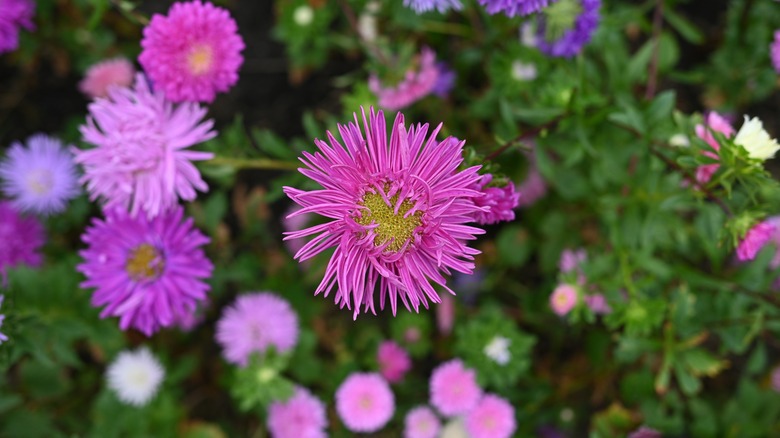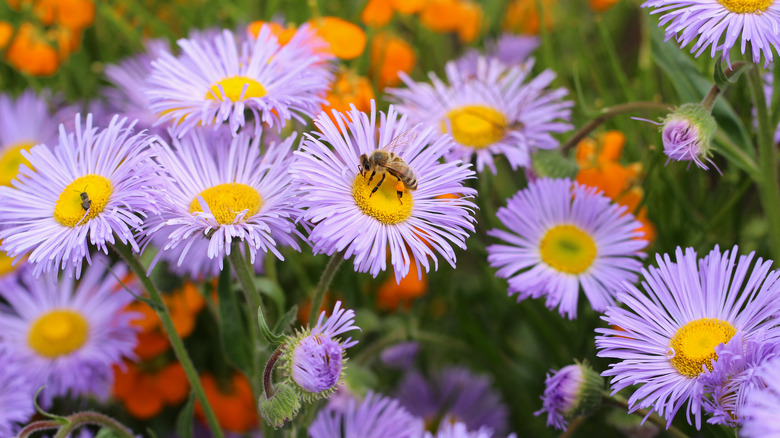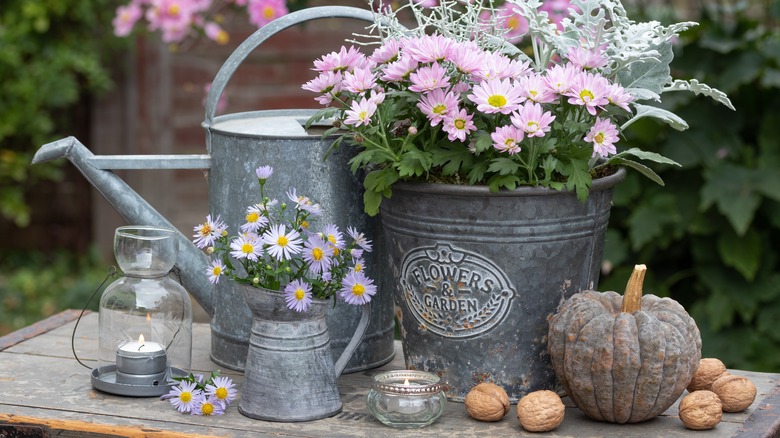Avoidable Errors That Are Sure To Harm The Asters In Your Garden
Asters or garden asters, also called Michaelmas daisies, generally refer to perennial plants in the Aster genus or the closely related Symphyotrichum or Eurybia genera. These beautiful plants boast star-shaped blooms that can bring color and beauty to gardens in late summer and early fall. While asters can be quite hardy, mistakes with pest control, sun exposure, fertilizer application, and soil composition can seriously harm or even kill your asters.
Asters in the Symphyotrichum and Eurybia genera are native to North America, while plants in the Aster genus hail from Europe and Asia. Care for asters is similar regardless of what continent they are native to. While the Symphyotrichum genus is only perennial in USDA zones 8 through 11, plants in the Aster genus can thrive in zones 4 through 8, and members of the Eurybia genus are perennial in zones 3 through 8. Depending on the species, asters can grow as large as 8 feet or remain as small as 6 inches, ensuring there's a perfect aster for almost any garden space.
Improper lighting and insufficient pest control can harm asters
While asters in the Eurybia genus, sometimes called woodland asters, grow best in dappled sun or part shade, plants in the Aster and Symphyotrichum genera require more light. These plants require a minimum of 2 hours of sunlight but grow and flower best in full sun. They tend to produce fewer flowers on longer and weaker stems without sufficient light. As important as light is for them during the day, asters are short-day plants and also need long, dark nights to bloom well. Make sure your asters aren't getting too much light from porch lights or street lights at night.
Asters can be vulnerable to a variety of pests, including aphids, cabbage loopers, thrips, and spider mites, so be sure to have a plan for pest control. Consider using companion planting to discourage these pests from bothering your plants and to attract beneficial insects like ladybugs. If you see signs of insect damage, hose off as many bugs as possible using the spray setting on your hose. You can also consider using insecticidal soap if the infestation is severe. Diseases like aster yellows can also plague these beautiful flowers. As many of these diseases are carried by leafhoppers and other pests, proper pest control can help to prevent disease.
Excessive fertilizer and poorly draining soil can devastate asters
Unlike many flowers, asters are only moderate feeders, so be sure not to overfertilize them. Too much fertilizer can encourage more leaf and stem growth and fewer flowers, especially if it is a nitrogen-heavy fertilizer. Additionally, asters can be injured by the salts in fertilizer which can lead to root damage. Use moderate amounts of a balanced slow-release fertilizer to reduce the risk of overfertilizing.
Avoid growing asters in clay-heavy soil as it has poor drainage and can lead to root rot. While asters can grow in a variety of soil types, they bloom best in well-draining soil with a pH between 5.5 and 6.5. Asters can survive in dry soil once they are established, but for the best blooms, they should be grown in moist but not waterlogged soil. Putting down a 2-inch layer of mulch around your plants provides them with more consistent moisture and helps protect them from sudden temperature fluctuations.


